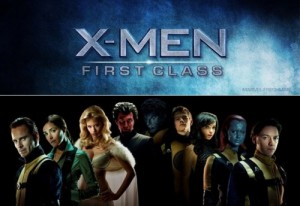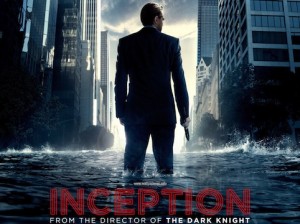
X-Men: First Class & Inception: What Films Lend to Writing
Film sequences inspired by comic books. The distillation of time. Breaking apart the machine. These are things that X-Men: First Class and Inception do pretty well. I’m no pop culture critic, and this is not a pop culture blog. What I’m interested in is what these techniques can tell us about the writing process – not only when writing out the meat of the piece, but of the way we structure it.
X-Men: First Class
 There were some pretty cool sequences in this film that really made me think about the way we write. The ones that stuck out to me were montages where there was no dialogue, just sound effects and mood music. The screen broke away into sections of two, then sections of three and four – looking like strips of comic. All the “windows” featured the same event, but depicted it from a different angle.
There were some pretty cool sequences in this film that really made me think about the way we write. The ones that stuck out to me were montages where there was no dialogue, just sound effects and mood music. The screen broke away into sections of two, then sections of three and four – looking like strips of comic. All the “windows” featured the same event, but depicted it from a different angle.
I love writing that views a “thing” – person, place, or event – from a variety of vantage points. I can take several pictures of my shoe from a myriad of angles, and each will reveal something different, showing me a different way to view the object. Now, what happens if we add all these different photos together? We could create a triptych with different panes, which suddenly gives a much different, deeper understanding of the shoe.
Each subframe within the frame is of the same thing, but shows something different. Visualizing a triptych keeps you on a path to making the writing more layered, rich, and nuanced. And because it’s highly visual, the triptych model makes me remember to render – to slow down and take my time while describing images.
Inception
We know that this movie is a total mindfuck that sends you on a time bender. For those of you who haven’t seen it, here are the basics: people go to sleep and enter another level of time, where things move slow. Then, they fall asleep in that level of time and enter another level, where things move even slower. And so on, until you can literally live a lifetime on one level of time that translates to something like ten minutes in the initial time level. Okay, or something like that.
basics: people go to sleep and enter another level of time, where things move slow. Then, they fall asleep in that level of time and enter another level, where things move even slower. And so on, until you can literally live a lifetime on one level of time that translates to something like ten minutes in the initial time level. Okay, or something like that.
What would happen if we applied that technique to writing? I imagine it would be something like a riff – starting in one place, going off on a tangent, going off on another tangent, and so on. It’s somewhat akin to free association, but it’s a little more reined in. By looking at certain points in your writing as opportunities to create a time portal (okay, so there’s a little sci-fi geek in me), it allows you to go a little deeper. Viewing revision opportunities as a chance to explore “levels” is one of the best exercises I think you can do.
Nerdiness and time portals aside, I think there’s something to be said about the value that film can add to our writing – especially when we think about how it would appear on the silver screen.
Comments are closed, but trackbacks and pingbacks are open.